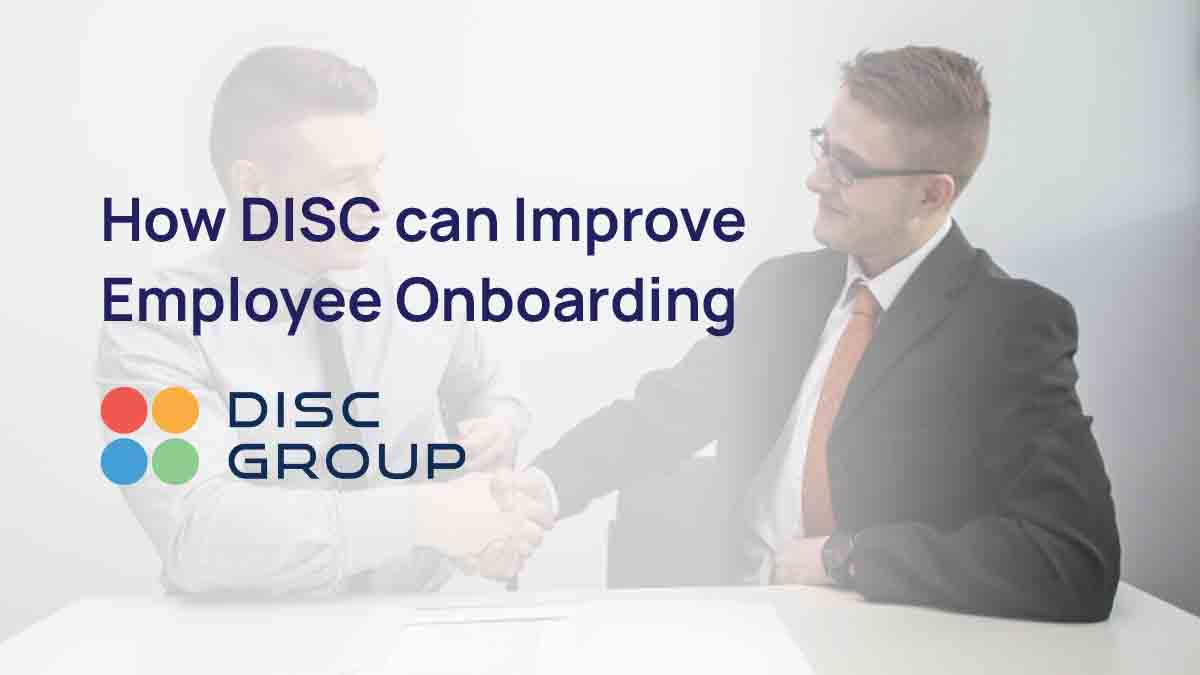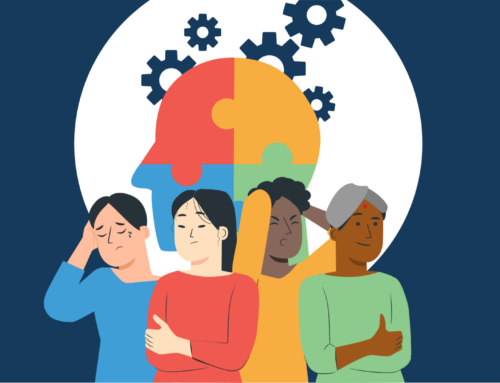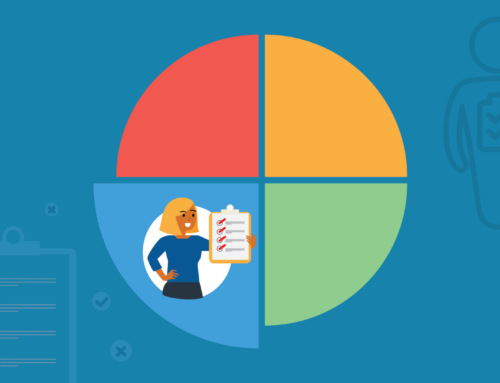You’ve recruited and hired the perfect employee. They have all the skills and qualifications necessary to do their job well. Now, the only challenge is to ensure a smooth transition into the new job from their first day.
An excellent employee onboarding process is essential, but how do you make sure everything goes smoothly in a new employee’s first week or month?
We’ve found that a one-size-fits-all onboarding process simply isn’t effective any more, especially in a post-Covid-19 world where growing numbers of employees are undergoing remote onboarding. Instead, an onboarding process that includes an assessment of the new hire’s DISC profile allows you to adapt the onboarding experience to provide the best results for each individual and their team members.
Here’s how to improve the employee onboarding process using a DISC assessment.
Why is employee onboarding important?
Onboarding is more than just paperwork and training, it sets the tone for the rest of an employee’s time in an organisation. Employees who report having an exceptional onboarding experience are 2.6 times as likely to be extremely satisfied with their workplace, and 70% of these employees report that they have ‘the best possible job’.
The impacts of a good onboarding process aren’t limited to employee satisfaction. A formal or standardised onboarding programme has been linked to 50% higher new employee retention and 62% greater productivity among new hires.
But, with only 12% of employees strongly agreeing that their organisation is great at onboarding new hires, it’s clear that the onboarding process often leaves a lot to be desired.
What is DISC?
DISC is a behavioural model and assessment designed to help individuals work more effectively with others. A DISC assessment (identifies an individual’s personality type (Dominance, Influence, Steadiness, or Compliance), and indicates strengths, limitations, and behaviours associated with each DISC personality type.
Organisations find that DISC assessments help them to:
- Improve communication
- Hold more effective team meetings
- Avoid conflicts or misunderstandings
- Boost collaboration and cooperation
- Increase motivation levels
All of these impacts lead to increased productivity and a better bottom line as a result.
Some organisations may choose to use a DISC assessment in the hiring process, while others may offer an assessment as part of a seminar or workshop. We recommend providing a DISC personality assessment early in the onboarding programme to allow new hires to better assimilate into the company culture.
Adapting your onboarding process to personality styles
Asking new hires to complete a DISC assessment in advance of their first day can help your team adapt the onboarding programme to their personality type. The different personality styles are as follows:
Dominance (D Style)
People with the Dominance personality style are direct, strong-willed, and goal-oriented. They are good at making decisions and can be competitive at times.
Dominance personality types like to feel in control of the onboarding process so providing them with timelines and goals is beneficial. To ease their transition into their new job, provide D Style new hires with resources detailing company-wide missions and goals. Because these people are strategic thinkers who like to look at the bigger picture, an onboarding process that reflects this is essential. It’s also useful to provide them with the most important need-to-know information first, leaving time to fill in the details later on.
Influence (I Style)
People with the Influence DISC type are optimistic, energetic, and inspirational. They have a lot of enthusiasm and can be high-spirited and adventurous. Often, this type of personality means that they are the most outgoing and friendly person on the team.
Individuals with the I personality style want to be accepted and welcomed in the workplace, so their onboarding process should provide opportunities for them to engage with their coworkers and managers. Ideally, I style individuals would rather be onboarded in-person rather than online, although if remote onboarding is necessary, you should ensure that they meet teams and key collaborators for online get-to-know-you sessions.
Steadiness (S Style)
Individuals with the Steadiness style tend to be patient, humble, and tactful. They are even-tempered, well-balanced, and are known to be sympathetic.
When onboarding a new hire with the Steadiness personality type, consider making a clear plan and structure for the process. Individuals with the Steadiness style do not like change so a well-communicated structure can help them feel more comfortable. Moreover, these new hires are likely to appreciate time to reflect and absorb information; don’t fill their first week with meetings and conversations!
Compliance (C Style)
Individuals with the Compliance style are reserved and private, with an analytical and systematic way of thinking. They seek perfection and accuracy, and are measured and sceptical in their work as a result.
To make the most of onboarding a new hire with this personality type, be prepared to answer lots of questions and provide additional resources. Compliance personality types love to gain more information and this should be encouraged throughout the process.
Like S types, Compliance personality types often appreciate a break from meetings and introductions in order to absorb all the new information. Ensure that these new employees get opportunities to reflect and learn during the onboarding process.
Using onboarding a new hire as an opportunity to improve team culture
Onboarding a new hire is a great opportunity to explore the personality makeup of the team they are joining. Are they an S type joining a whole team of D types? Will the addition of the new employee skew the team towards I types? This is a good time for the other employees to refresh their understanding of their personality styles and remind themselves of how best to communicate and collaborate with their coworkers. If any existing employees have not done the assessment before, this is a good opportunity to find out their DISC results.
We often mistakenly think of onboarding as a one-way process through which a new employee learns about the structure, hierarchy, norms, and company culture of an organisation and how to fit into it. However, the most productive onboarding processes recognise that this is a two way street: onboarding is also an opportunity for existing employees to learn how to communicate and collaborate better with different personality types.
Embedding an awareness of DISC personality types into the onboarding process for new hires and current employees can help boost productivity and communication throughout the team.
Improving understanding between new employees and managers using DISC profiles
Managers have a key role to play during a new hire’s onboarding and employee experience within a company. In fact, two in five employees have quit a job because of a bad manager, while 53% of people considering leaving a job report that it is because of their manager.
Onboarding is an opportunity for the new hire and their manager to learn each other’s personality styles and how to communicate and work together most effectively. Managers can start a conversation by comparing their personality type with that of the new employee, encouraging an open and reflective dialogue about the ways that they can best work together.
For example, a D type new employee might want casual check-ins with their manager to set goals and discuss the organisation’s bigger picture, while someone with an S behavioural type might prefer a more structured routine. Similarly, an I type manager might want to inspire and motivate their new hires due to their people-oriented personality, while a manager with the C behavioural style might prefer that their team work systematically and independently to produce high quality work.
Openly discussing personality and communication styles can help a manager and new employee work more effectively together, heading off potential future misunderstandings. For example, a manager and a new employee who both have the Dominance style and are natural leaders may find themselves butting heads or becoming competitive; a conversation during onboarding can help avoid this situation. Or, a new employee and a manager who are both I types might both struggle with procrastination and attention to detail. Discussing this provides an opportunity for self-learning and to plan strategies to overcome these limitations together.
Conclusion
With the onboarding journey setting the tone for the rest of a new hire’s experience in an organisation and paving the way for their future communication and collaboration with team members, it’s vital that onboarding is completed effectively.
With the help of the DISC assessment, it’s easier than ever to learn the personality types of a new hire, their team members, and their manager. With these insights, onboarding processes can be adapted to allow new employees to excel from their very first day.
Interested in embedding DISC personality assessments in employee onboarding? The DISC Group can help. We provide DISC trainer certification courses as well as providing individual and group DISC profiles. Using the DISC Flow® model, we combine the tried and tested DISC model with the power of emotional intelligence to enhance personality insights.
To provide the best training and resources for your organisation, DISC Group offers a free consultation to anyone considering implementing DISC. To find out more about how DISC can improve your onboarding programme, get in touch today.





